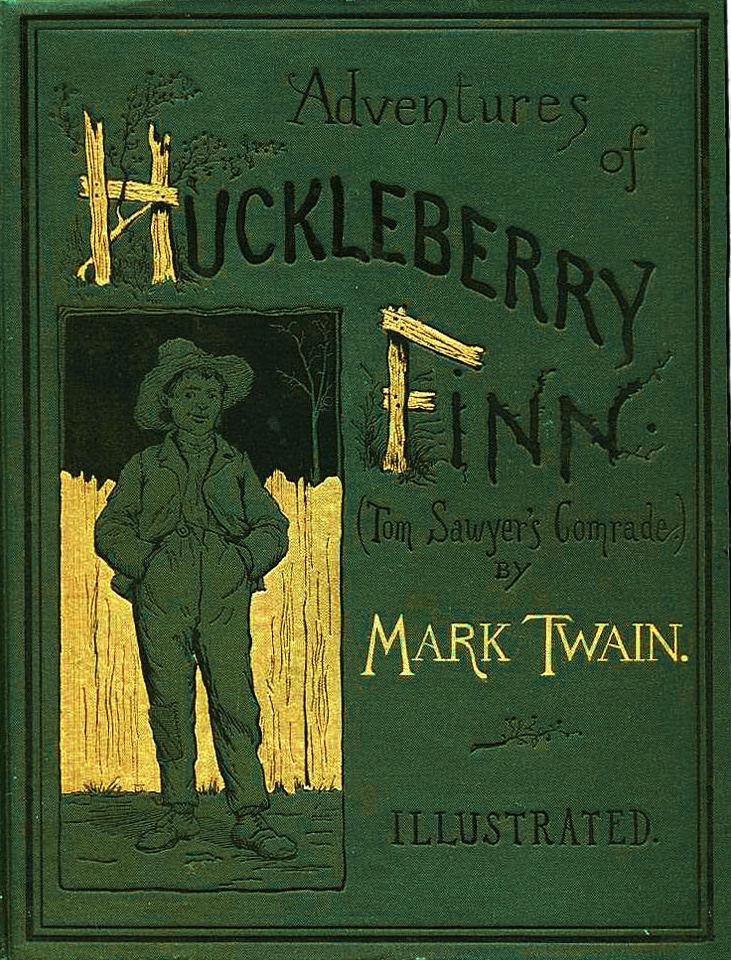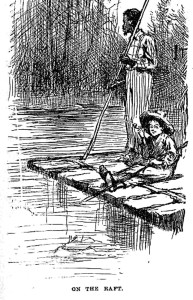“The sky looks ever so deep when you lay down on your back in the moonshine; I never knowed it before. And how far a body can hear on the water such nights! I heard people talking at the ferry landing. I heard what they said, too—every word of it.”
This passage comes from Huckleberry Finn, one of the greatest novels of all time. It’s also one of the greatest uses of the first person perspective. In Huckleberry Finn, Mark Twain got into the head of his main character like no other writer.
One of the most important decisions that any writer can make is choosing the novel’s point of view. Will you tell your story through first person, as Twain did with Huck Finn, or will it be third person or any of the many variations?
I have heard it said that that there are as many as 26 different kinds of point of view, although I can’t begin to guess how they came up with so many. Even more importantly, why would anyone want to break it down into so many different sub-categories?
Such people probably have very organized sock drawers.
For the purposes of this blog, let’s keep it simple. Let’s just stick with three points of view:
- Third Person Omniscient
- Third Person Limited
- First Person
In the third person voice, of course, the viewpoint character is referred to as “he” or “she,” but never as “I” because that would put you in first person. But there are different types of third-person viewpoints, the most common being omniscient and limited.
In my last blog, The Perils of Head-Hopping, I talked about how my editor banned me (for good reason) from using the third person omniscient voice when I wrote my first novel. Omniscient is when the writer puts the reader in the thoughts of any character at any time. In one paragraph, you might be in one character’s head and the next paragraph you’re in another character’s head.
I argued in my last blog that the omniscient view makes it more difficult to attach to any one character because you’re constantly bouncing from head to head, rather than remaining focused on the interior thoughts and feelings of one character at a time. If you want to find out more details about why my editor discouraged me (to put it mildly) from using the omniscient voice, check out my last blog.
So if I scrapped third person omniscient, that leaves first person and third person limited, and I chose third person limited. Why?
Third person limited is a nice compromise between first person and omniscient. Third person limited provides more intimacy with your characters than the omniscient voice, and it provides more flexibility in the plot than first person.
With first person, you can create the greatest intimacy between your character and reader because everything is from the “I” perspective. Just as in Huckleberry Finn, you climb into the head of the character and see everything through that person’s eyes. You can’t get more intimate than that.
However, by locking your story into one character’s viewpoint, you also don’t have much flexibility. Every scene is from one person’s perspective, so that character has to be in every single scene of the book.
When I had to switch to a new point of view for my first novel, The Disappearing Man, I knew immediately that first person wouldn’t work. The Disappearing Man is based on the true story of Henry “Box” Brown, a slave who mailed himself to freedom in 1849 by shipping himself in a box from Richmond to Philadelphia. If I had written this novel in first person, I would have been writing myself into a box, you might say. Once Henry was sealed inside the box, everything would have to be from his viewpoint inside the box. That would have made for a very boring story, although in the hands of a great writer I suppose it might have made a fascinating experimental novel—an entire book told from the perspective of a man inside a box.
But it wasn’t for me.
I wanted to be able to follow other storylines, particularly the attempt of John Allen (the villain) to track him down. I couldn’t very well follow John Allen’s pursuit if I’m stuck inside the box, writing from Henry’s perspective.
So for me it was an easy decision: third person limited.
Third person limited enabled me to switch among several different viewpoint characters. One scene would be from Henry’s third person perspective inside the box, and then another scene would be from John Allen’s perspective as he tries to capture the escaped slave. Yet another scene would be from the perspective of Samuel Smith, the white man who helped Henry escape.
In other words, I could get into the head of only one character (the viewpoint character) in each scene. That’s why it’s called third person “limited.”
I had to be careful not to have too many viewpoint characters. If you switch among too many, you once again lose the intimacy between the reader and the character. So I rotated the viewpoint among four primary characters in The Disappearing Man.
Some books start a new chapter whenever they switch from one character’s point of view to another character’s. I prefer to make the switch at a scene break, rather than a chapter break. As a result, I might have a single chapter with three different scenes, each one presented from a different character’s viewpoint.
In sum, here is my run-down on the three voices:
- Third person omniscient: Very High Plot Flexibility, Very Low Intimacy
- Third person limited: High Plot Flexibility, High Intimacy
- First person: Very Low Plot Flexibility, Very High Intimacy
Mark Twain once said, “The difference between the right word and the almost right word is the difference between lightning and a lightning bug.” The same is true about choosing the right voice. When you find the right voice for your story, it’s like capturing lightning in a bottle.
5 for Writing
- Get writing. Find the time to write. Then do it.
- Learn by listening—and doing. Solicit feedback, discern what helps you.
- Finish your story. Edit and rewrite, but don’t tinker forever. Reach the finish line.
- Thrive on rejection. Get your story out there. Be fearless. Accept rejection.
- Become a juggler. After one story is finished, be ready to start another. Consider writing two at once.






 We love helping your growing in your writing career.
We love helping your growing in your writing career.
